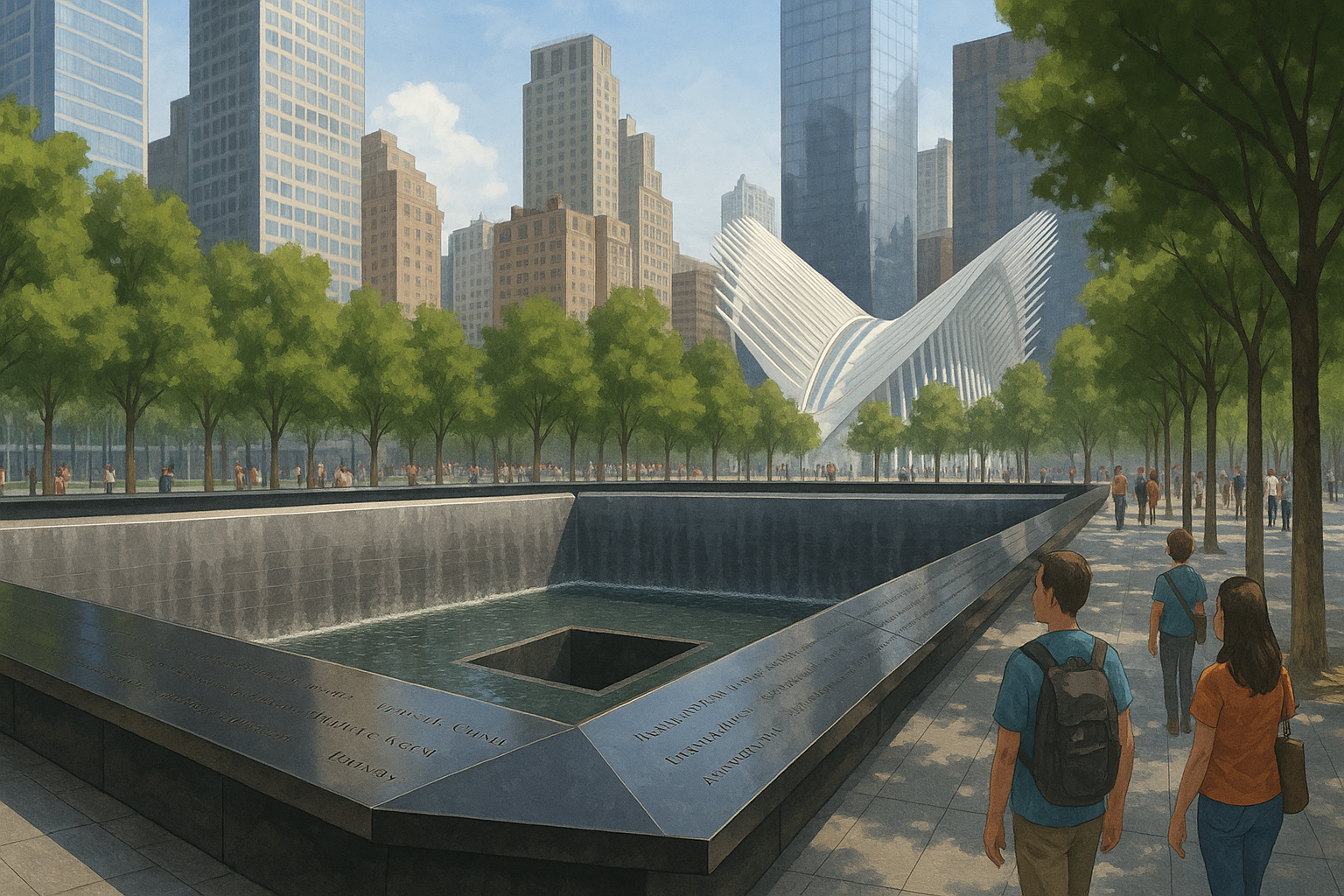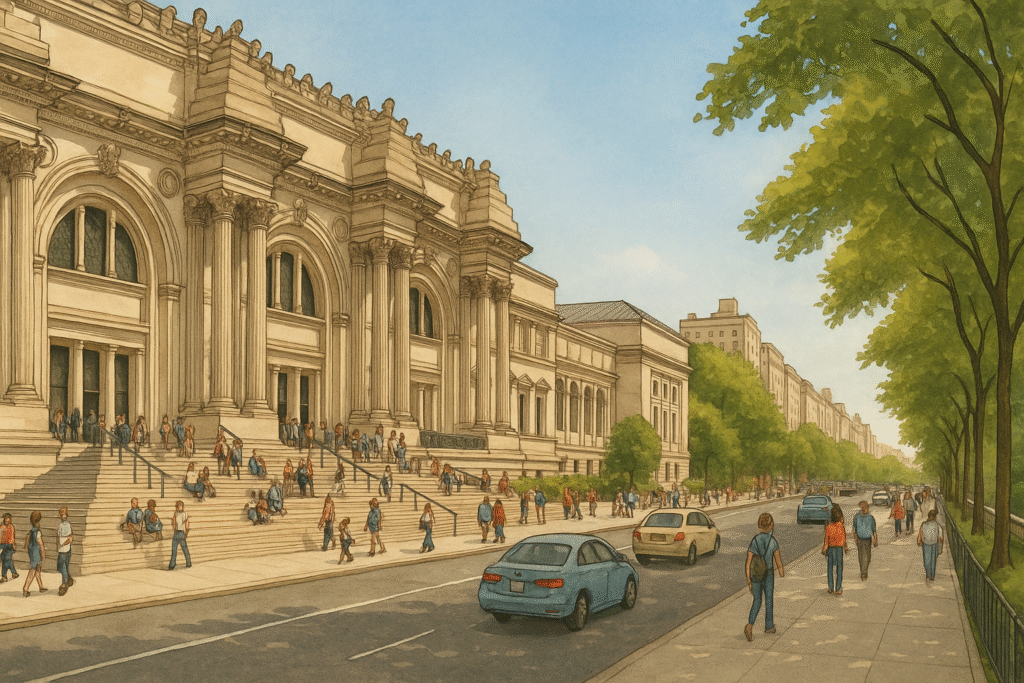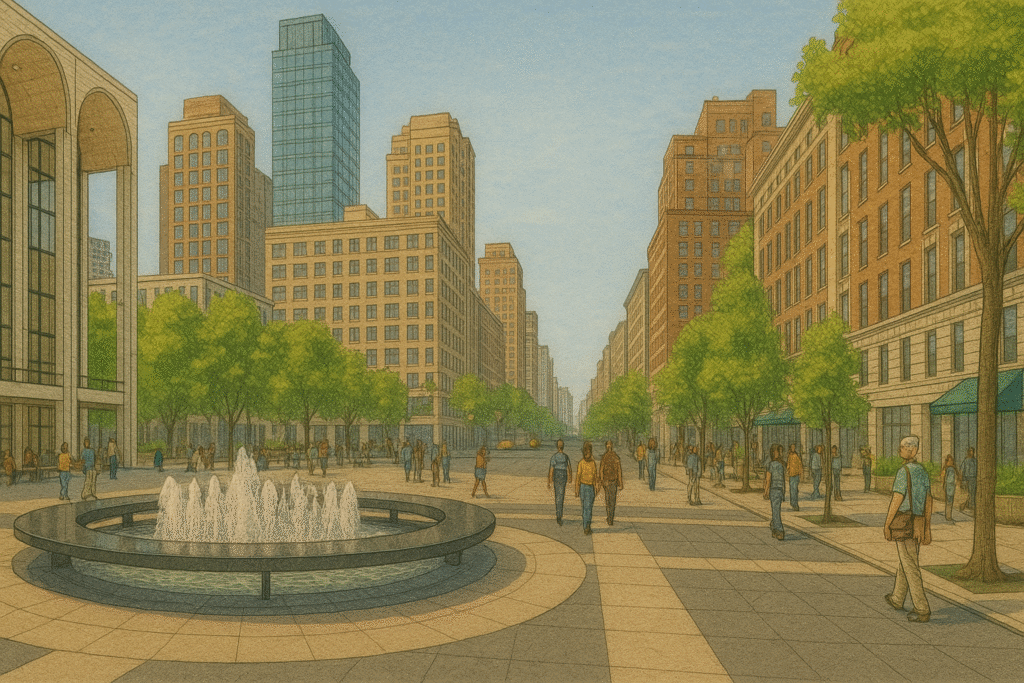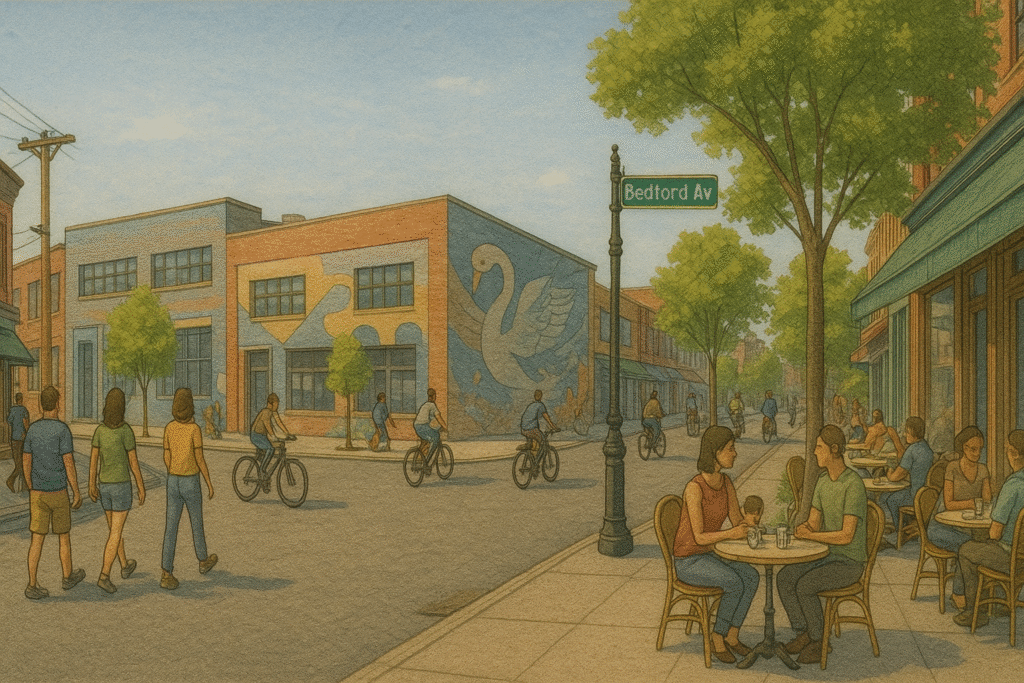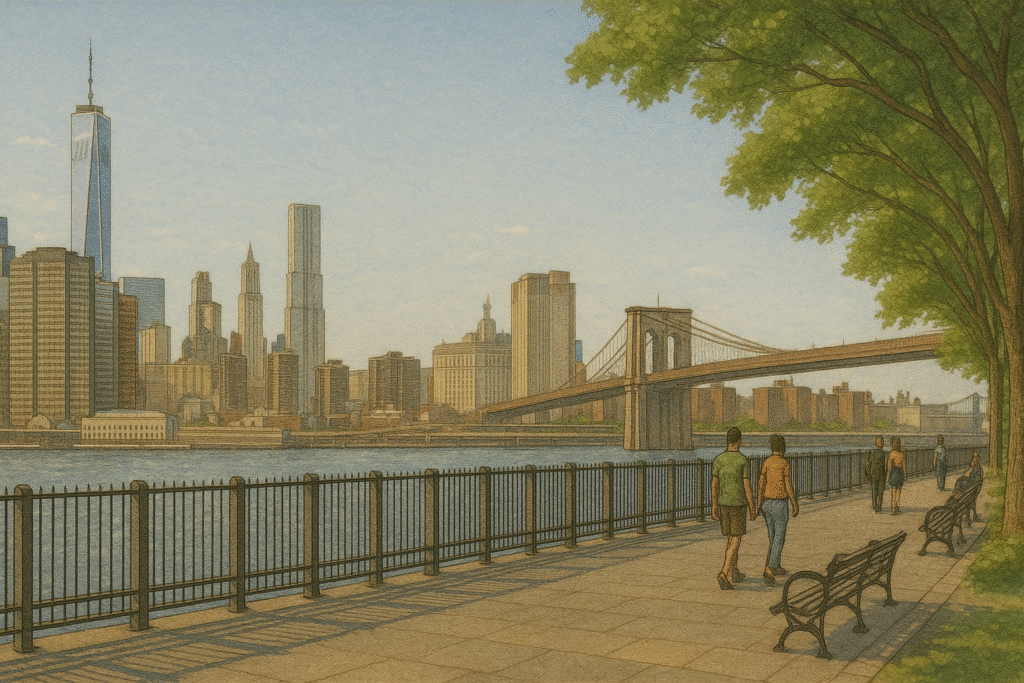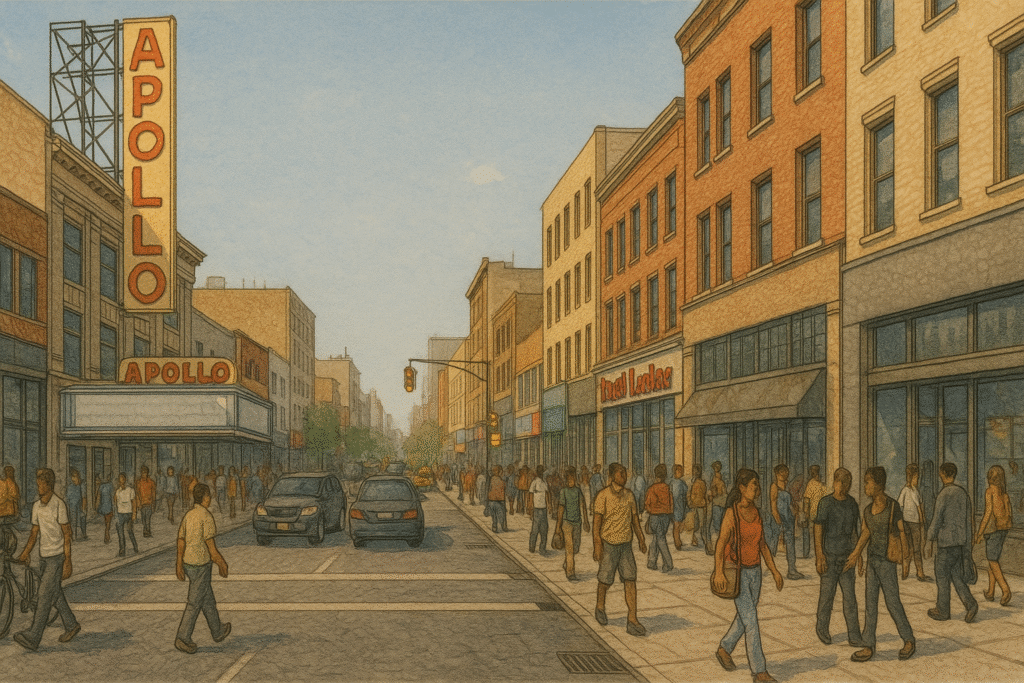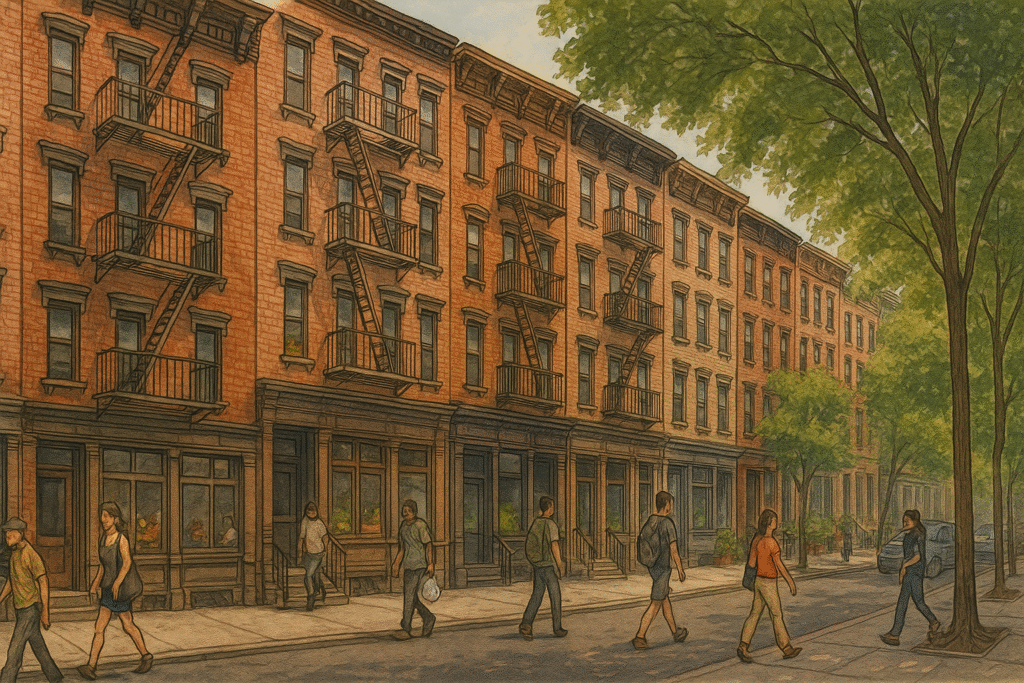A two-day visit allows for a more balanced introduction to New York City. This itinerary begins with cultural institutions and major landmarks in Midtown Manhattan, then shifts downtown to explore the city’s civic and historical core. Each day is walkable and can be completed without reliance on taxis or public transportation, although a short subway or bus ride may save time between neighborhoods. The route includes indoor and outdoor stops, with scheduled breaks built around museum entries, public plazas, and parks. Travelers can adjust their pace depending on interest, weather, and timing, with optional evening returns to key locations.
Midtown to the Upper West Side (Day 1)
The day begins in Midtown Manhattan at Rockefeller Plaza and St. Patrick’s Cathedral, two major landmarks located within close walking distance of each other. The cathedral offers free entry, with access to its stained-glass windows, nave, and side chapels. Visitors should be aware that services may be in session, but respectful viewing is permitted throughout most daytime hours. Rockefeller Center includes a street-level plaza, below-ground concourse, and surrounding shops. Public restrooms, indoor seating, and food vendors are available in the concourse area.
From Fifth Avenue, the route continues west along 50th Street or north on Sixth Avenue toward Lincoln Center for the Performing Arts. The walk leads through a mix of commercial buildings and residential towers before arriving at the plaza. The center’s exterior grounds include a reflecting pool, open-air seating, and views of the Metropolitan Opera House, David Geffen Hall, and David H. Koch Theater. Interior access requires tickets or guided tours, but visitors can stop at the David Rubenstein Atrium nearby, which offers free seating, public restrooms, and information on scheduled performances.
Next, continue southwest to Columbus Circle, a major intersection where Broadway meets Eighth Avenue and 59th Street. The central column is surrounded by a small public plaza, and nearby entrances lead into The Shops at Columbus Circle, an indoor retail space with restrooms and food options. Across the street, Central Park’s southwest entrance offers an optional short detour into shaded paths and benches.
The final destination for the afternoon is the American Museum of Natural History, located along Central Park West between 77th and 81st Streets. The museum features exhibits on human origins, fossils, biodiversity, and planetary science. Timed entry tickets are required. Next door, the Rose Center for Earth and Space includes a suspended planetarium sphere and interactive displays about astronomy and physics. Both buildings offer café seating, indoor rest areas, and family-friendly amenities.
Columbus Avenue (Day 1)
After visiting the American Museum of Natural History, the walk continues along Columbus Avenue, a commercial corridor running parallel to Central Park West. This stretch of the Upper West Side includes a mix of restaurants, cafés, bookstores, and clothing shops. Most businesses are locally owned, with storefronts concentrated between 76th and 86th Streets. The neighborhood is active but less crowded than Midtown, and sidewalks here are wide enough to accommodate both foot traffic and casual browsing.
Dining options range from informal counter-service spots to sit-down restaurants with seasonal outdoor seating. Visitors looking for a light meal or snack will find bakeries, delis, and cafés spaced at regular intervals. Public benches and shaded street corners offer places to pause, though seating may be limited during peak hours. Some restaurants include sidewalk chalkboards listing hours and wait times, which can help travelers make quick decisions without entering each establishment.
For those interested in evening activities, Lincoln Center is accessible by walking back south on Columbus Avenue or through a short cut across Amsterdam Avenue. Many performances begin around 7:30 p.m., so dinner near the theater complex may offer a convenient transition. Those not attending a performance may still return to the Lincoln Center plaza to view the lighted fountain and nighttime crowds before ending the day. Otherwise, travelers can continue exploring Columbus Avenue or head east toward Central Park to conclude the first day’s itinerary.
Downtown Civic Core (Day 2)
Day Two begins in Lower Manhattan, where several civic and historical sites are located within walking distance of each other. Travelers can reach the starting point—Foley Square—by subway, using lines that stop at Brooklyn Bridge–City Hall or Chambers Street. Foley Square serves as a broad entry plaza framed by government buildings and courts. From here, a short walk leads south to City Hall Park, a landscaped green space bordered by New York City Hall, the Municipal Building, and the entrance to the Brooklyn Bridge pedestrian walkway. These structures can be viewed from outside; interior access is limited to public tours and scheduled hours.
Continue south along Broadway to St. Paul’s Chapel, the oldest surviving church building in Manhattan. Entry is free. The chapel features a compact but informative exhibition on its role during the aftermath of September 11, as well as colonial-era gravestones and a preserved interior sanctuary. It also provides restrooms and a quiet place to sit indoors.
Two blocks further south is the 9/11 Memorial, located at the site of the former World Trade Center. The memorial consists of two recessed reflecting pools surrounded by bronze panels inscribed with victims’ names. Entry to the outdoor space is free and open during daylight hours. Nearby is the 9/11 Museum, which requires paid timed entry and typically includes a security check. Visitors not entering the museum can still walk the plaza, view the pools, and see the Oculus, a transportation and retail hub designed with an open, cathedral-like interior.
From the memorial, continue southwest to Battery Park, a public space along the southern edge of Manhattan. The park includes clear views of New York Harbor and the Statue of Liberty, visible without boarding a ferry. Benches, shade trees, and walking paths make this a good stopping point. Travelers can also explore Castle Clinton, a round brick fort near the water, or visit vendors and casual food carts located along the promenade.
To end the day, visitors may choose to remain in Battery Park City, which includes residential towers, public art, and waterside dining options. Several restaurants face the Hudson River, offering open-air seating and sunset views depending on time of year.
This two-day itinerary covers two of New York City’s most distinct districts. The first day focuses on the Upper West Side and Midtown, where cultural institutions and organized public spaces dominate the landscape. The second day moves into Lower Manhattan, where government buildings, memorials, and historic churches occupy a dense, walkable grid. Travelers experience contrasts in architecture, atmosphere, and street activity without requiring complex transit planning. Breaks are built into each day, and most stops offer indoor access, restrooms, or seating. Visitors may adapt the route to their schedule or interest while remaining grounded in a coherent geographic flow. By the end of the second day, the city’s vertical scale, historical range, and civic layout will have been clearly introduced.

The Street Sign
The Street Sign points the way to where things are — the parks, restaurants, museums, and everything else. These guides are built to save you time and energy. Need a plan for an NYC outing? Follow The Street Sign.
